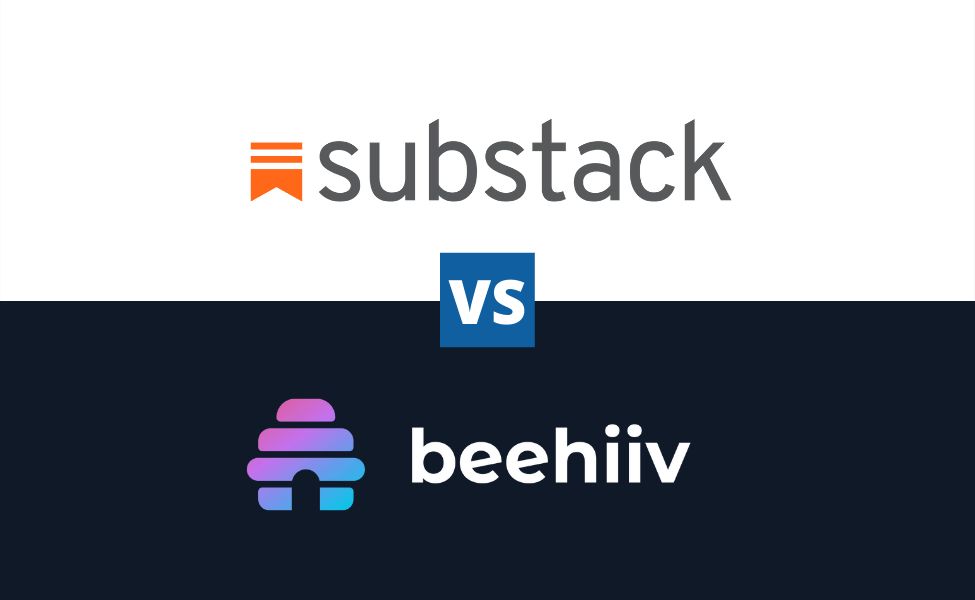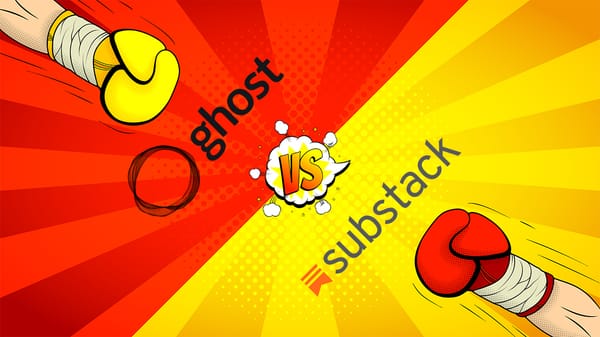Best Substack alternatives for newsletters

I guess you're looking for a Substack alternative because you are frustrated with at least one of its many flaws.
Growing is hard, customization sucks, SEO is bad, lack of email automation, and Substack also charges outrageous fees.
If you feel that these Substack limitations are getting in your way, it's time to move on to a different tool.
Substack alternative tool finder
The quiz below takes 2 minutes to complete and will help you find out what is the best Substack alternative based on your needs.
At the end of the quiz, you'll see a score for each tool. A higher score means the tools is best suited for your needs as a Substack alternative.
For more details and a complete overview of each Substack alternative read the complete article below.
beehiiv
Beehiiv is a great Substack alternative because it does almost everything Substack does and more.
Newsletter growth is beehiiv's main advantage over Substack. It allows integrations, has a newsletter referral program, and automated email sequences. Substack doesn't have any of these features.
Monetization is another area where beehiiv shines. With beehiiv, you can earn money via memberships, advertisements via the Ad Network, and with recommendations.
These monetization options are great because they are all native to beehiiv, so they will be ready to use without needing 3rd-party tools.
Also, beehiiv doesn't take a percentage from memberships, unlike Substack, which charges 10%! This single difference alone makes beehiiv much cheaper for creators and makes it a better option than Substack.
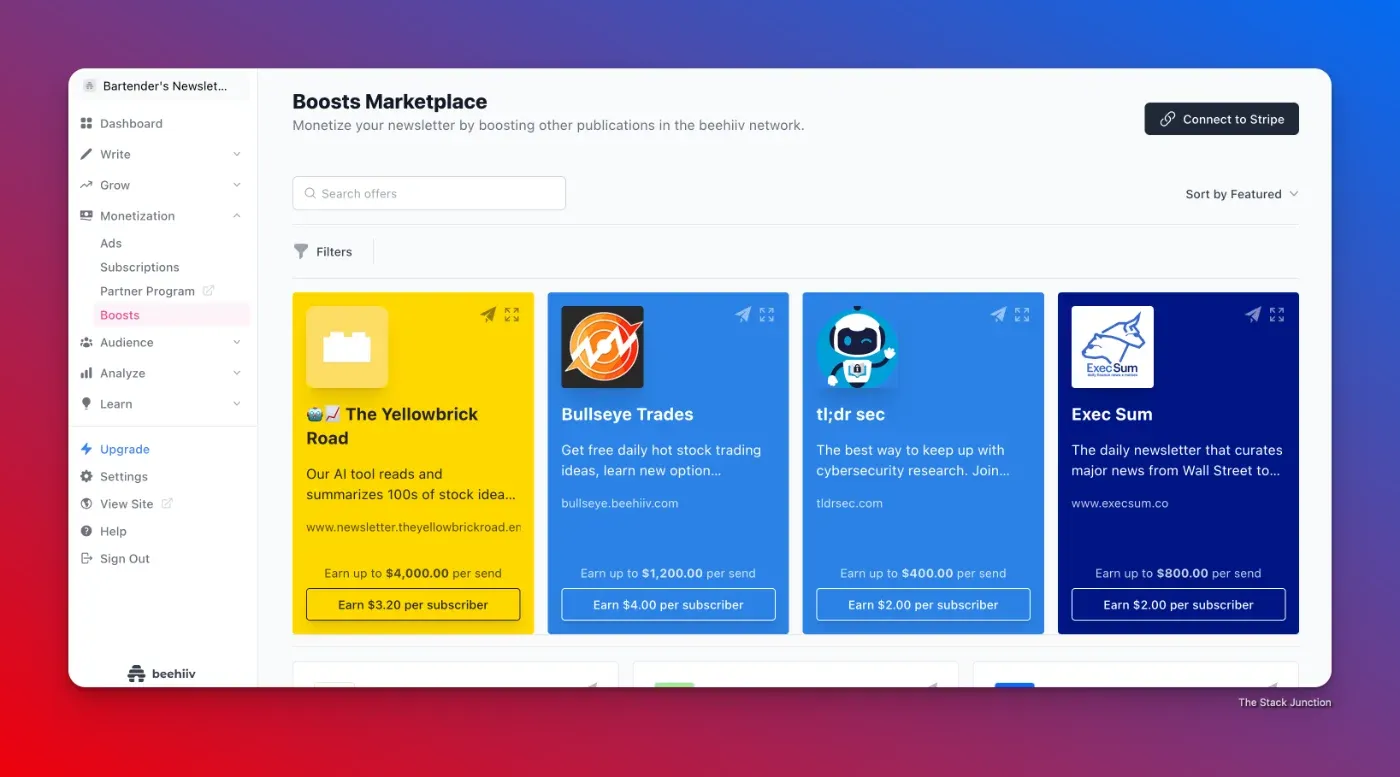
Beehiiv is also good when it comes to SEO, including you using a custom domain. Beehiiv releases frequent updates to keep improving their offerings, and SEO was one of the areas where I've seen the biggest improvement since 2022.
Read the full beehiiv vs Substack comparison article for all the details and how these tools stack against each other.
While Beehiiv is impressive, it also has some limitations. For example, most of the good SEO and growth features aren't available in the Free plan. So, if you want to use beehiiv to its full potential, you must use the paid plans.
Fortunately, beehiiv’s pricing is reasonable. The Free plan allows up to 2500 subscribers, and after that, prices start at $42/ month (paid annually).
Beehiiv's Pros vs Substack:
- 0% fees;
- Good SEO;
- Integrations;
- Email automation;
- Good customization;
- Lots of monetization options.
Beehiiv's Cons vs Substack:
- Free plan only up to 2,500 subscribers;
Ghost
Ghost CMS is my favorite alternative to Substack! Ghost is like a mix of the good parts between WordPress and Substack.
Ghost has great SEO. This solves one of the big issues with Substack, which is ranking well on Google.
As a general rule, as you publish more, expect more visitors from Google—as long as you post about things people are actually searching for and all the other SEO pieces fall in place.
Ghost is also superior to Substack regarding customization, with many themes available to pick from.
You can buy them directly on the Ghost Marketplace or directly on the theme-maker website (you'll be supporting my work with this option). 2 of my favorite themes are Ubud (from Aspire Themes) and Rinne (from Bright Themes).
However, I must admit that customizing themes beyond their default requires coding skills, which isn't great. Read the full Ghost vs Substack for a detailed comparison.
The writing experience on Ghost is great. It has the right balance between lots of features and user-friendliness. For teams, Ghost also offers role-based permissions, making collaboration smooth.
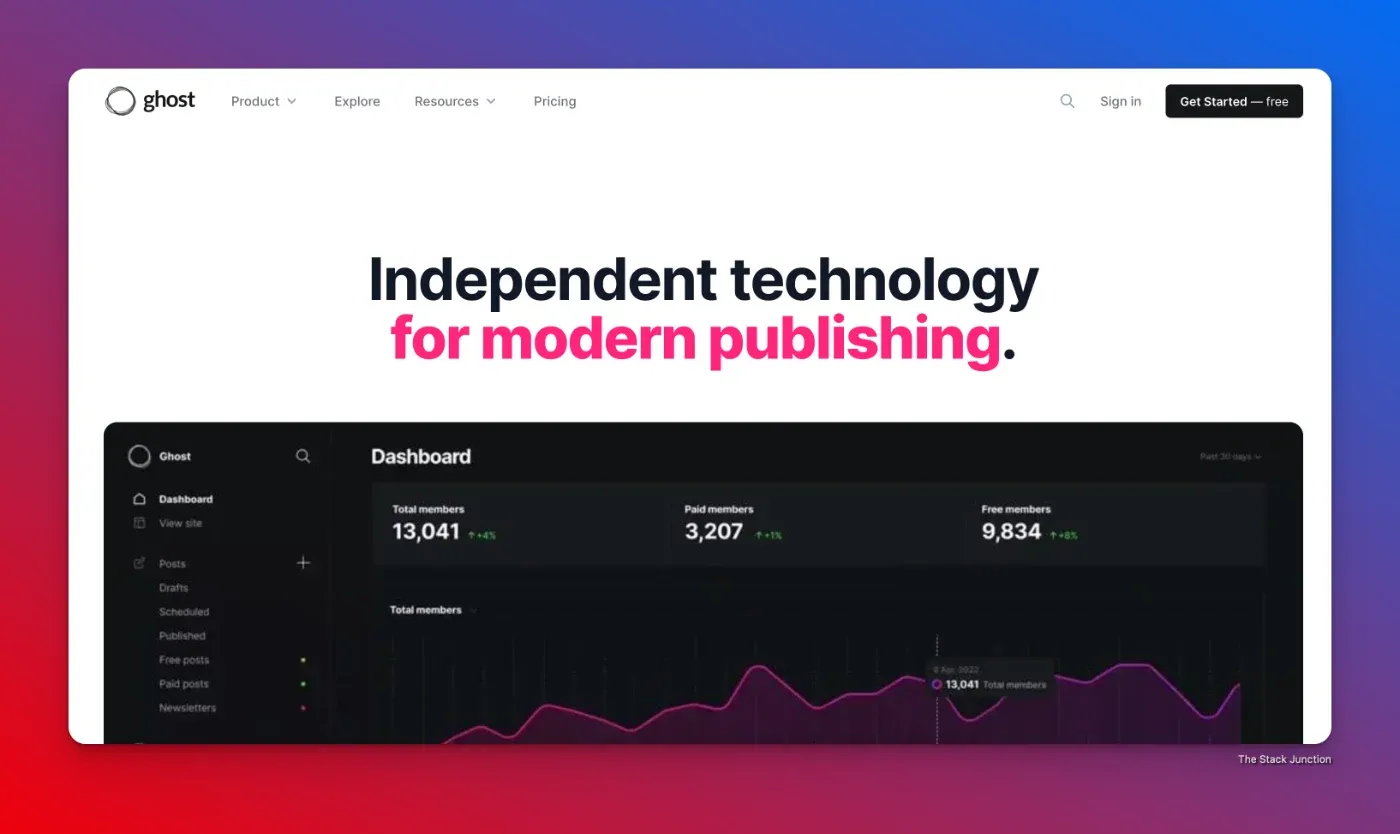
Since Ghost is open-source, this means you can self-host. Also, you will not be subjected to "content guidelines" like on Substack.
Ghost doesn't charge memberships. This means you don't have to give Ghost 10% like Substack demands. Because of this difference, Ghost tends to be much cheaper for most creators.
Ghost (PRO) is the best hosting solution for Ghost, with prices starting at $9/month (this is the solution I have used since August 2022). This price includes installation, backups, automatic updates, and help from the Ghost team whenever you need them.
Ghost Pros vs Substack:
- 0% fees;
- Great SEO;
- Open-Source;
- Plugins and integrations;
- Better writing experience;
- Custom HTML and code injection;
Ghost Cons vs Substack:
- No free plan;
Kit (formerly ConvertKit)
Kit is great for creators who already have a website or don't want to have a website and want to monetize their newsletter. This email tool is popular among professional creators.
Kit is easy to use, even if you're new to email marketing. You will be creating newsletters and automated email sequences in a breeze.
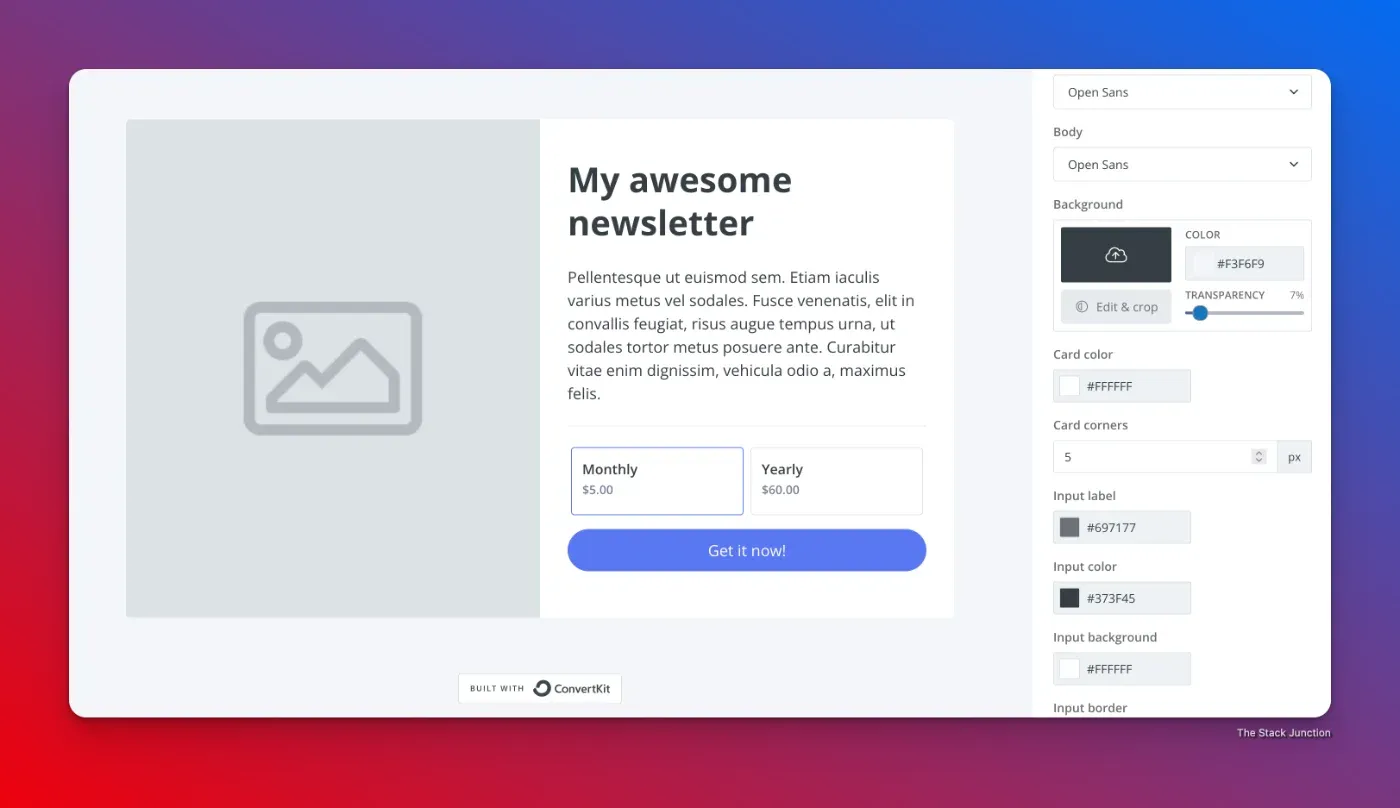
Monetization is at the heart of Kit's offerings. They make it convenient to charge memberships or even sell digital products.
Kit also has a Sponsor Network that helps you find advertisers, and it takes care of all the business stuff, like finding the sponsors, negotiating the prices, and collecting the money!
Customization is another massive advantage of Kit over Substack. They have plenty of design options that you can change to match your brand style. I talk about this and more in my Kit vs Substack article.
They also have a great Free plan allowing up to 1,000 subscribers. This lets beginner creators access most of the features available on Kit. After that, Kit paid plans start at $9/ per month.
Kit Pros:
- 0,6% Fees;
- Email Templates;
- Email Automation;
- Ability to sell digital products;
Kit Cons:
- Below average SEO capabilities;
- Free plan only up to 1,000 subscribers;
MailerLite
Mailerlite is one of the most affordable Substack alternatives on this list.
They have similar features like combining newsletters with blogging. However, MailerLite and Substack are both below average for blogging and SEO.
MailerLite has pretty templates for newsletters and landing pages, so it's way better than Substack regarding customization. If you don't like the default options, use the Custom HTML editor for full control over the newsletter's design.
For monetization, MailerLite allows memberships and selling digital products via integration with Stripe. But MailerLite memberships have a flaw, so I recommend you avoid using this option.
Speaking of integrations, MailerLite has integrations with many other tools like Make and Zapier. This is an advantage, as Substack doesn't have integrations.
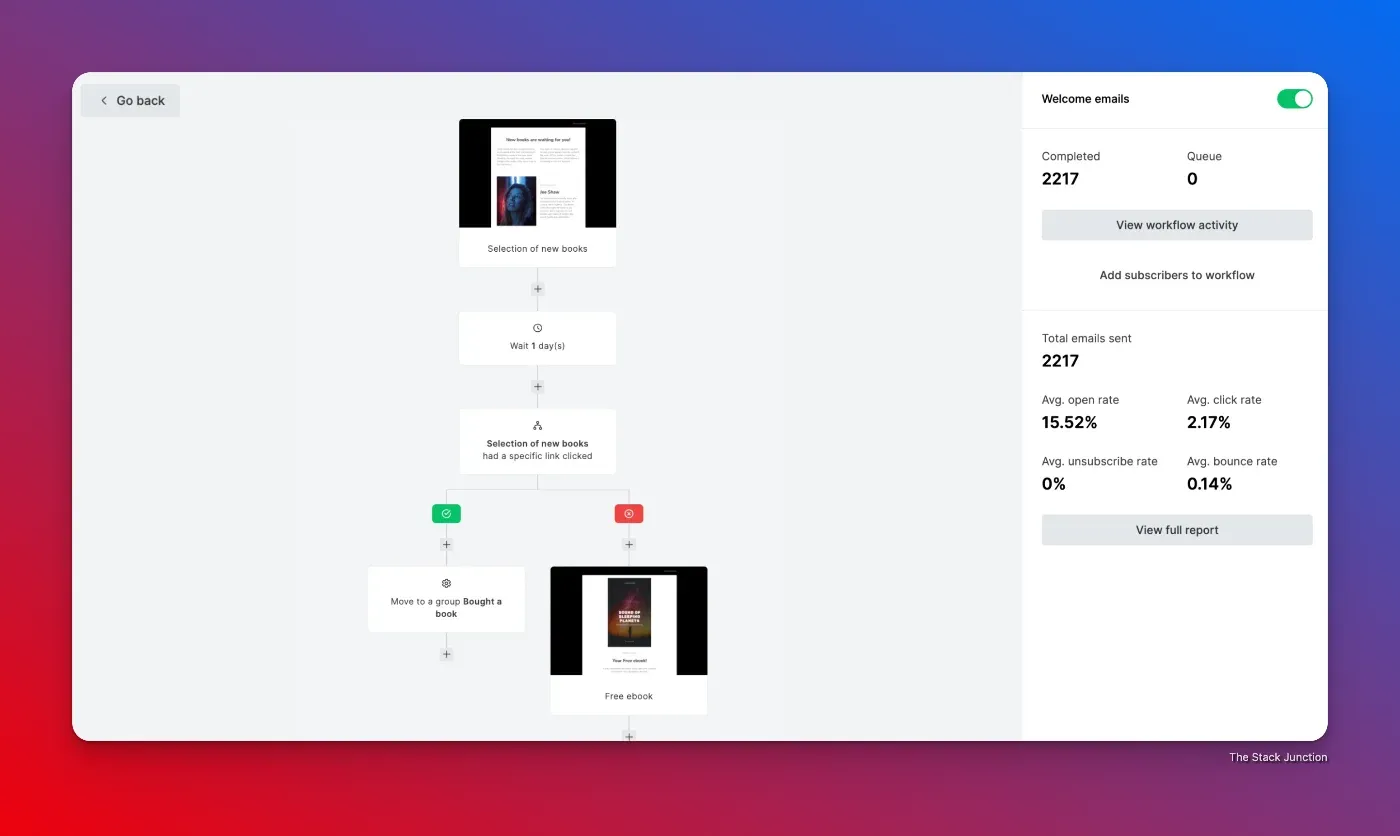
The email sequences are another thing I love about MailerLite. You use it for things like welcome messages or email sequences with their templates.
As for pricing, MailerLite has a Free plan for up to 1,00 subscribers, and after that, paid plans start at $9/ month.
MailerLite Pros vs Substack:
- 0% fees;
- Integrations;
- Better customization;
- Selling digital products;
- Automated email sequences;
- Custom HTML and JavaScript;
MailerLite Cons vs Substack:
- Below average SEO capabilities;
- Free plan only up to 1,000 subscribers;
Podia
Podia is an all-in-one platform that combines blogging, newsletter, and community features. This is in contrast to Substack, as Podia gives you a complete digital headquarters for your content business.
Podia's different monetization options make it a great Substack alternative. On Podia you can earn money via online courses, digital downloads, memberships, and paid communities.
Customization on Podia is also superior to Substack. The drag-and-drop website builder lets you customize things without touching code.
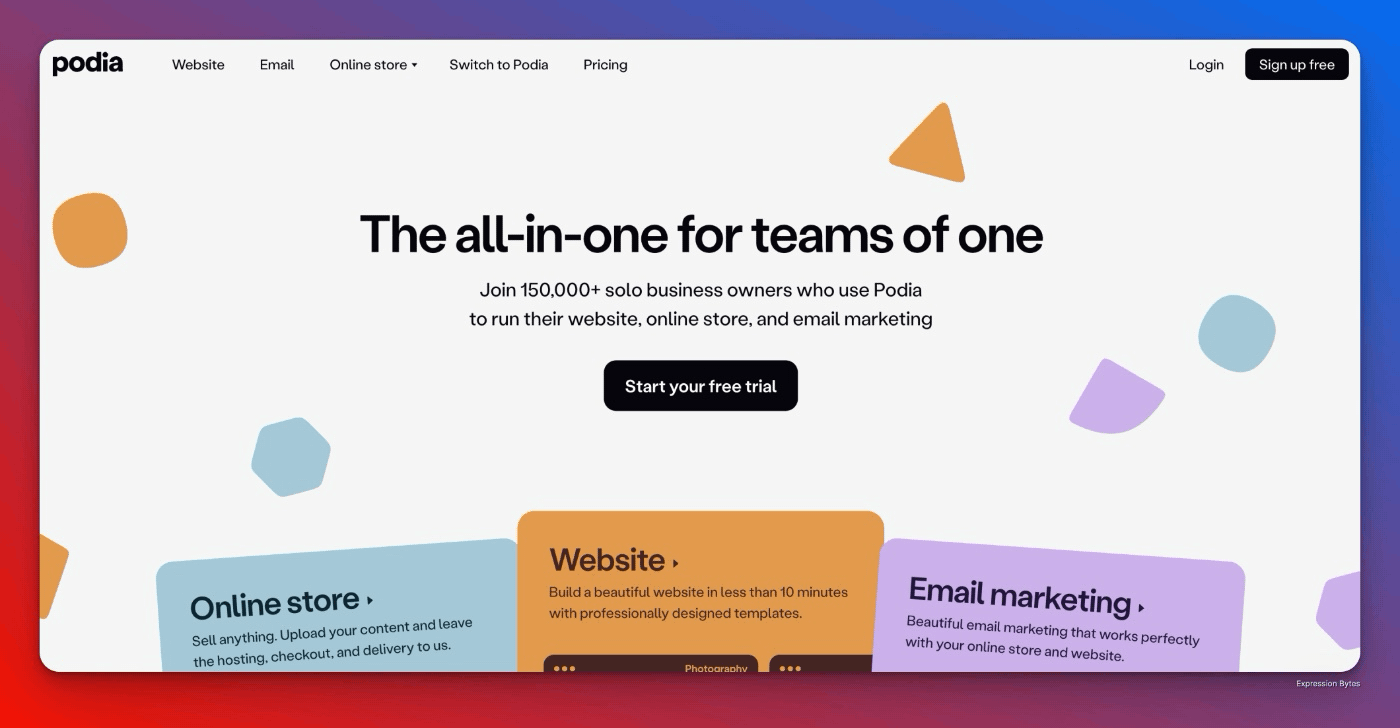
Podia's SEO capabilities are much better, giving your content a chance to rank on search engines like Google, something that Substack users struggle with.
Podia also outperforms Substack on email and newsletter features. This platform has email automation tools that let you create welcome sequences or even send product promotions.
On top of that, Podia also has a Zapier integration that allows you to create custom workflows by connecting your favorite tools.
However, Podia has some limitations.
My biggest complaint about Podia is the lack of a mobile app, which is something Substack has. This is an oversight since Podia started as a community tool, and a lot of community engagement happens on mobile devices.
Podia also lacks a discovery network. Substack has created a mini-ecosystem where readers can find new writers, helping a bit with organic growth.
As for pricing, Podia doesn't have a free plan like Substack.
Podia's cheaper option is the "Mover" plan, which costs $39/month and has a 5% transaction fee on sales.
The "Shaker" plan removes the transaction fees and costs $89/month, a significant advantage over Substack's fixed 10% fees.
As for email and newsletters, things work as an add-on. Podia email is free for up to 100 subscribers, including email templates and automation features. Beyond that threshold, pricing starts at $9/month for 500 subscribers.
Podia Strengths vs Substack:
- Better monetization options;
- Better customization;
- Advanced email capabilities;
- More community features;
- SEO.
Podia Cons:
- No free plan;
- No mobile app on Podia.
Flodesk
Flodesk is the ideal Substack alternative for creators wanting to monetize through digital products.
One of the biggest advantages Flodesk has over Substack is its zero fees on sales. This is in contrast to Substack's 10% cut of your subscription revenue.
Flodesk also has better email features than Substack. For example, email automation lets you create welcome sequences and sales funnels without manual work.
On top of that, Flodesk also has integrations with tools like Instagram and Shopify, just to name a few.

Another cool thing about Flodesk is the checkout pages with upsell functionality, which helps you increase average order value.
The aesthetic appeal of Flodesk newsletters also has the perfect balance between professional and visually pleasing designs. This means your newsletters will stand out without requiring design expertise on your part.
But Flodesk isn't perfect.
Flodesk's biggest limitation is that it doesn't have website or blogging capabilities like Substack. And you'll need another tool to publish content online.
Flodesk also doesn't allow paid memberships, which can limit recurring revenue.
As for pricing, the free plan has significant restrictions, with many of Flodesk's best features reserved for paid users.
On the free plan, Flodesk includes landing pages, a limited number of daily emails, integrations and works similarly to a link-in-bio tool.
Flodesk's Email plan costs $38/month regardless of subscriber count and includes unlimited subscribers, custom email layouts, automation, and API access.
If you want to sell products, the Checkout add-on costs $26/month and gives you access to sales pages, checkout with upsells, and payment processing.
Flodesk Pros vs Substack:
- Flat pricing (independent of subscriber count);
- Better for selling digital products and services;
- Amazing email templates;
- No fees;
Flodesk Cons:
- Limited free plan;
- Lack of community features;
- Not good for blogging + newsletter.
Blogmaker (formerly Blogstatic)
Blogmaker Pros vs Substack:
- Better SEO;
- Code injection;
- Much cheaper;
- Better customization;
- Custom sending domain.
Blogmaker Cons vs Substack:
- No memberships option
Blogmaker makes it easy to create a blog with a newsletter. No coding skills or anything to install. Just create an account and start writing.
Blogmaker deserves to be on this list as it keeps improving and releasing new features.
Everything with Blogmaker is clean and straightforward. They have all the features you are expecting from a good blogging platform without any of the complications.
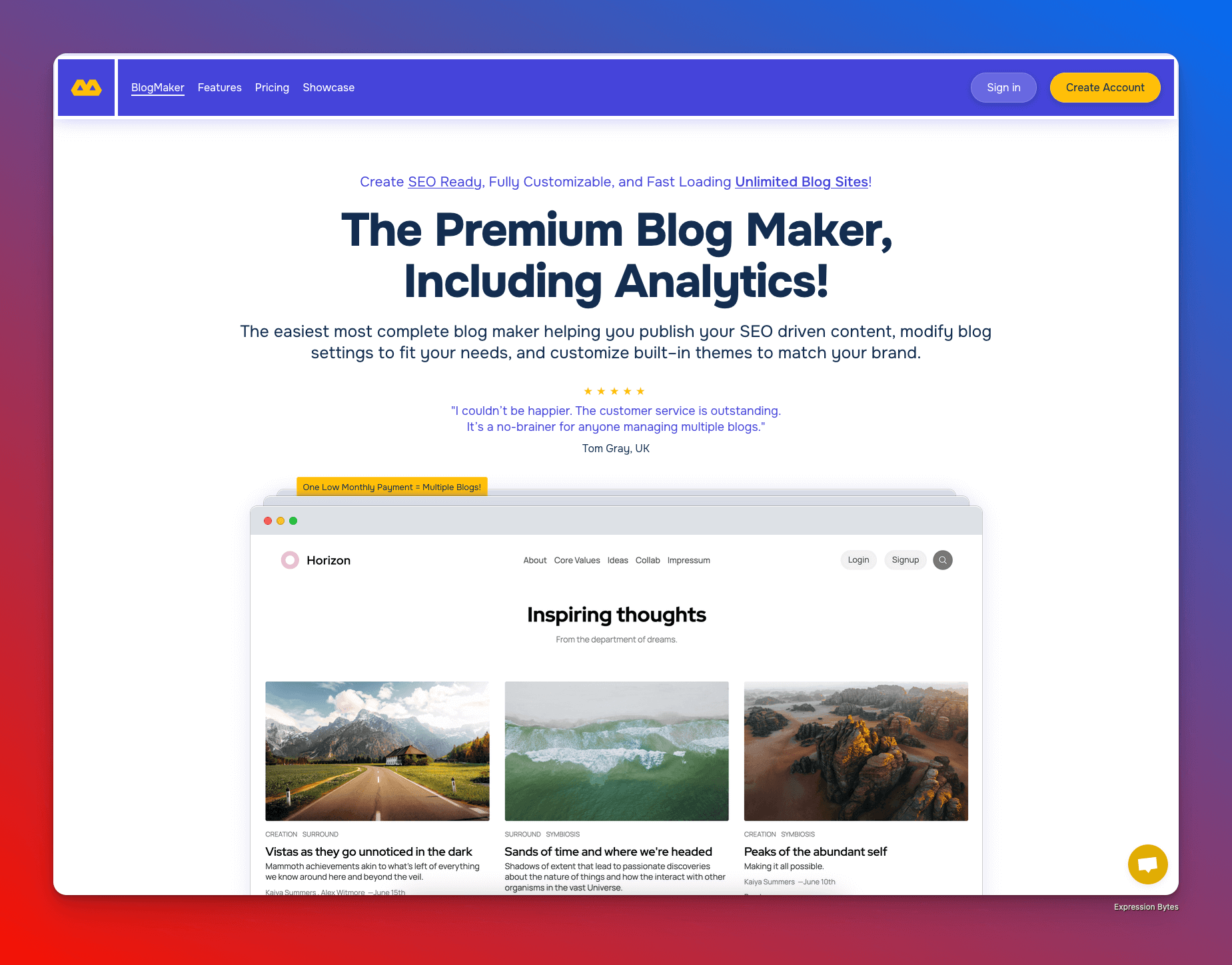
Blogmaker even has better SEO capabilities than Substack, so you can expect better results and more visitors from search engines.
Also, Blogmaker is pretty fast, and the writing experience is a bliss. I like that you don't need to preview the text. Things will appear on the website as you see in the editor. This is a big-time saver!
Keep in mind this tool was released only in 2021 and is already this good! However, Blogmaker still lacks paid memberships.
Blogmaker pricing starts at $25/ month and allows unlimited blogs.
Medium
Medium is a well-known blogging platform, and there are good reasons to use Medium as a Substack alternative.
First, posts on Medium have great reach via search engines and a large user base. This helps with discoverability, whereas Substack newsletters struggle.
Next, Medium is free and easy to use and lets you collect email addresses from readers. Plus, it has a Zapier integration which helps a lot.
Medium also has SEO advantages, as you can start writing there and build an email list. Later, you can create a website and repost the same content content published on Medium.
To get the SEO benefit from this, just put a Canonical Tag on the Medium posts. This will tell search engines the posts on your website are the ones they should rank. Yes, this is allowed and works well.
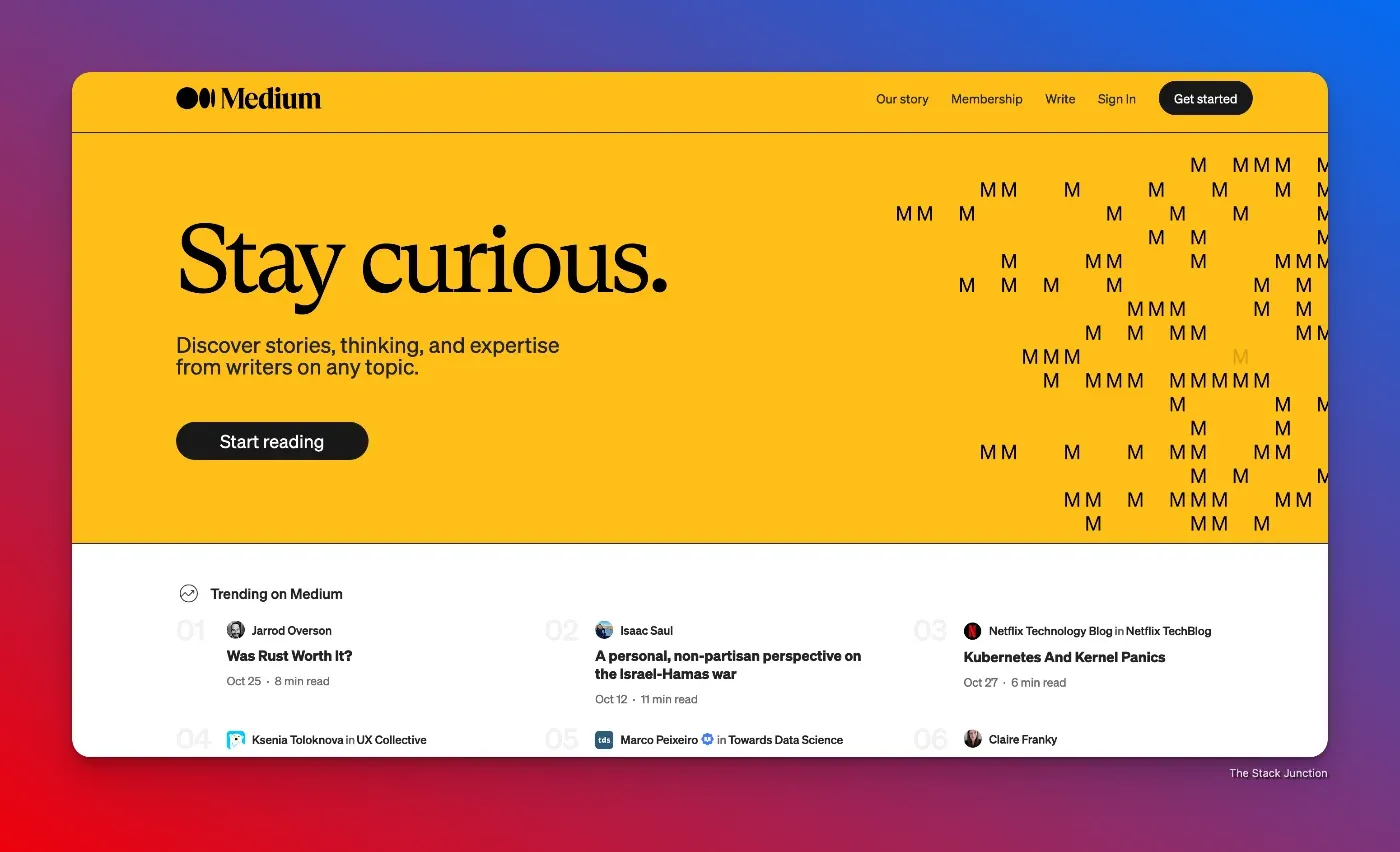
Medium is a risk-free option to start writing, get a following, and reap the SEO benefits for your site at a later stage.
You can also make money writing on Medium. You'll earn based on the time Medium premium members spend reading your posts.
As you can notice, there's no mention of paid newsletter subscriptions on Medium. So you won't have that option.
Medium's Pros vs Substack:
- Free;
- No fees;
- Discoverability;
- Zapier integration;
- Use a custom domain.
Medium's Cons vs Substack:
- Monetizing is tricky;
- Customization is bad;
- Stricter content rules than Substack.
WordPress
It's possible to use WordPress as a newsletter tool, but it would take a series of articles to explain it. So, here are the general guidelines.
To pull it off, you need coding knowledge, loads of time, and money to pay for all the needed parts (plugins and themes).
So, for creating a newsletter on WordPress, you need to:
- Create a website;
- Use a plugin that sends posts as a newsletter, like MemberSpace or Newsletter Glue.
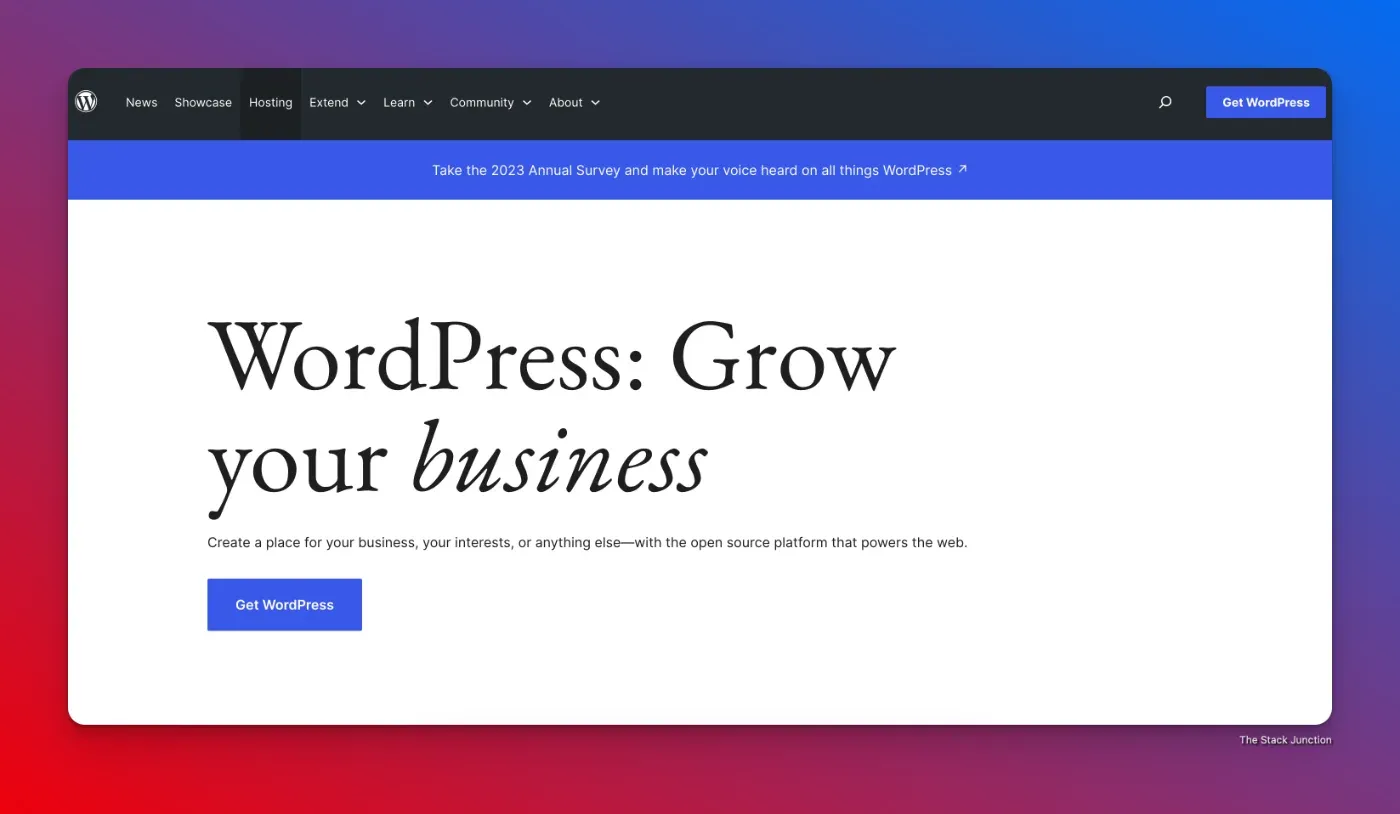
Creating a WordPress website can be a daunting task if you're not familiar with the process.
However, you will have complete control of the website, including design, which is one of the reasons many people pick WordPress.
About monetizing your newsletter, you can rely on recurring memberships or display ads on the website's pages.
The cost of using WordPress varies a lot. You have to pick hosting, a domain name, and pay for plugins. On top of that, you can have developer costs if you can't build the website alone.
WordPress will require a lot of attention to maintain because the website can be hacked or have vulnerabilities in so many ways.
WordPress Pros vs Substack:
- 0% fees;
- Better SEO;
- Integrations;
- Open-Source;
- Better writing experience;
WordPress Cons vs Substack:
- More security risks;
- Coding knowledge required;
- No native newsletter capabilities;
- Too complicated of an option for newsletters;
Final Thoughts
As you can see, there are plenty of Substack alternatives to send a newsletter.
The best option for you will depend on what you are looking for. This includes things like if SEO is important, how you want to monetize, if you already have a website, and so on.
This list is more or less in the order of the tools I think are the best options for most creators.
There are plenty of more options not included because they aren't good enough or I haven't reviewed them yet, so I can't give my opinion about them.
Now, pick the right tool for you and start a great newsletter.







